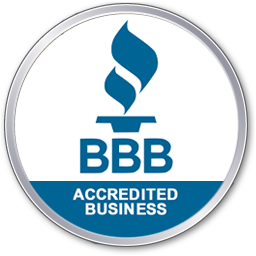If you’ve heard any of those late-night mesothelioma commercials, you’re likely already aware of the health hazards that asbestos poses. Asbestos is a hazardous material commonly found in older homes and is a health concern that shouldn’t be brushed off.
As a homeowner, you might be wondering if you have asbestos and asking yourself, “How much does it cost to remove asbestos from my home?”
The answer—isn’t simple. The actual cost to remove asbestos will depend on multiple factors.
Keep reading this comprehensive asbestos removal guide that’ll outline the various factors impacting asbestos removal cost, the different removal methods, tips to reduce the cost, and how you can find trusted asbestos removal services.
Factors That Impact the Cost of Asbestos Removal
Size of the Affected Area
The first factor that impacts the total cost of asbestos removal is the size of the affected area. The size of the affected area and the required resources, time, and labor move proportionally with each other. In other words, the larger the affected area, the higher the project’s costs will be.
- Square footage. The cost of asbestos removal is often calculated on a per-square-foot basis. For example, a 2,000 sq ft. home will cost more than a 1,000 sq ft. home.
- Amount of contaminated material. Larger affected areas contain more contaminated material, which requires more care to remove. For example, a home with contaminated insulation throughout the walls and ceilings will take much longer to remediate than a home with contaminated material in a small portion of the attic.
- Complexity. Larger areas typically come with unique challenges, such as hard-to-reach areas and tight spaces. This ultimately increases the labor and time required resulting in higher costs.
- Asbestos disposal fees. Likewise, larger areas will contain a higher volume of waste, which will also increase the final disposal fees. This is due to a larger quantity of asbestos potentially requiring specialized transportation and disposal services.
Extent of Damage
When asbestos-containing materials are damaged or in the process of deteriorating, they release harmful fibers into the air, posing significant health risks.
In these cases, additional safety measures and more rigorous removal methods will likely be necessary. Unfortunately, this will contribute to higher costs.
- Asbestos material condition. The condition of the affected material will play a significant role in the removal cost. Asbestos that’s intact and undisturbed is less likely to release airborne fibers, making the process straightforward. However, damaged or deteriorating asbestos will require extra care and may increase the total cost.
- Encapsulation. If the material was previously encapsulated as a temporary measure and is significantly damaged, the removal process will be much more complicated.
- Removal complexity. The amount of damage can also affect how simple or complicated it will be to remove the asbestos. Damaged materials can easily crumble and release fibers. If it is damaged, specialized equipment will likely be required to prevent further contamination.
- Cleanup. Damaged asbestos most times require a more thorough cleanup process to ensure that all the harmful fibers have been removed. This includes extensive air testing, cleaning procedures, and replacing contaminated building materials.
Types of Asbestos Present
Asbestos is a generalized term that refers to a group of six naturally occurring minerals. Each of the fibrous minerals has its own unique properties and risks.
The varying characteristics and risks can impact the cost of removal.
- Chrysotile or White Asbestos. Chrysotile is one of the most commonly used forms of asbestos. It’s often found used in roofing materials, floor tiles, insulation, and gaskets. It is considered less hazardous than the other types but still poses a significant health risk if the fibers are ingested or inhaled.
- Amosite or Brown Asbestos. Amosite is more hazardous than chrysotile because this mineral is longer and more brittle. That means it’s more likely to become airborne when disturbed. Amosite is commonly found in pipe insulation, ceiling tiles, and cement sheets.
- Crocidolite or Blue Asbestos. Crocidolite is considered to be the most hazardous of the six due to its thin, needle-like structure that can easily become lodged in the lungs. This asbestos is commonly found in insulation, spray-on coating, and cement products.
- Anthophyllite, Tremolite, and Actinolite. These last three types are not as commonly found in building materials but rather in products like sealants and paints. They’re not as commonly encountered, so some services may charge a premium for their knowledge of handling these materials.
Different Methods for Treating Asbestos
Encapsulation
Encapsulation is a popular asbestos abatement method because it is one of the more cost-effective methods. It involves sealing the asbestos-containing materials in a protective coating or barrier, preventing the fibers from releasing into the air.
In addition to being cost-effective, this method is often selected because it causes minimal disruption compared to other techniques.
Pros:
- Less expensive than a complete asbestos removal
- Requires fewer resources and labor
- Less disruptive because it doesn’t involve removing the building material
- Considered environmentally friendly because it reduces the amount of asbestos waste in the landfill
Cons:
- Only works as a temporary solution
- Protective barrier or coating can degrade over time and release asbestos fibers into the air
- May not be suitable for all asbestos-containing materials, such as materials in poor condition or in areas with high moisture levels
Enclosure
Enclosure, like encapsulation, involves applying a physical barrier around the affected material to prevent it from releasing dangerous fibers into the air.
Enclosure isolates the material from the surrounding environment. It essentially offers a way to contain the material without requiring complete removal.
Pros:
- Provides a protective barrier without disturbing or removing the affected materials
- Suitable for situations where removing the material can potentially cause significant damage to the building’s structure
- Can serve as a long-term solution for large projects
Cons:
- Barrier construction can be labor-intensive, time-consuming, and costly
- May require ongoing maintenance and inspections to ensure barrier integrity
- May alter the appearance of the affected area and can be less aesthetically pleasing
Removal and Abatement
The final method, removal, is a common and extremely effective asbestos abatement method. As the name states, it involves completely extracting the asbestos-containing materials from the property.
However, this method can be costly because it requires experienced professionals, specialized equipment, adherence to strict protocols, and thorough asbestos elimination.
Pros:
- Provide long-term peace of mind for the home’s occupants
- The most appropriate choice for materials that are in poor condition, have been damaged, or are not suitable for enclosure
- Can increase the property’s value as the home has undergone asbestos remediation
Cons:
- Generally, the most expensive method
- Can be disruptive as it may require temporary relocation
- Can result in needing extensive renovations and repairs to replace the removed materials
Tips for Reducing the Cost of Asbestos Removal
Although asbestos removal can be a costly process, there are ways you can reduce the expenses while ensuring compliance and safety for everyone involved.
Tip #1 Get Multiple Quotes
Like with any big purchase, you want to get multiple quotes from several qualified professionals to compare the costs and services. This can help separate the reputable companies that offer competitive pricing and high-quality services from those that, well, don’t.
Tip #2 Perform a Thorough Inspection
Before removing any asbestos, be sure to conduct a thorough inspection so that you identify every last asbestos-containing material on the property. This will help with creating a detailed plan and avoiding unexpected costs that come up due to unidentified asbestos materials.
Tip #3 Time It Wisely
Asbestos abatement can be a costly project. Whenever possible, try to schedule the work during the company’s off-peak season when the demand is low. This typically results in reduced rates and avoids rushed jobs.
Tip #4 Bundle Services
If your property is showing signs of mold growth or you know the paint that’s chipping away contains lead, consider bundling services with the same company to get a discounted rate. At Alpha Environmental, we offer drywall patching and painting services to ensure your walls look great and last for decades.
Let Us Take Care of Your Asbestos Problem
When it comes to addressing an asbestos problem, it’s imperative to act promptly and decisively. By having a solid understanding of the various factors that impact the cost of asbestos removal, you’re able to make informed decisions about the best course of action for your home.
At Alpha Environmental, we specialize in asbestos abatement services and are dedicated to providing our clients with the most effective solutions.
Our team of trained professionals will work with you to assess the extent of your asbestos problem and recommend the best course of action.
Whether it’s enclosure, removal, or encapsulation, you can trust Alpha Environmental to handle your asbestos issues with the utmost care.
Contact us today to schedule an appointment and learn more about how we can safeguard your home from the dangers of asbestos.




